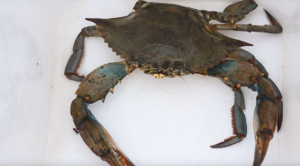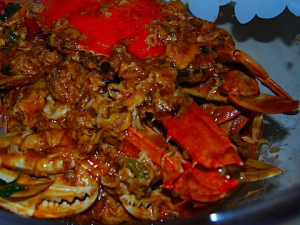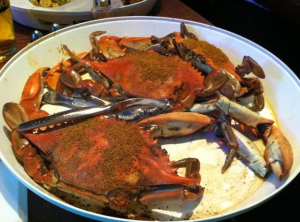Blue Crabs
Introduction
These creatures get their name from their bluish hue on their claws but their scientific name (Callinectes sapidus) suggests that they are “beautiful swimmers” that also happen to be “savory”. And savory they are. Blue crabs are one of the most heavily harvested crustaceans in the world. They are abundant and tasty; numerous and delicious.
What do they look like?

The blue crabs carapace can actually having colors ranging from bluish gray to brownish green tint, and their colors blend from one to the other. Blue crab pincers can have an orange, red tip. Their shells can grow up to a width of about 9 inches and they definitely have a body type that looks nimble and adapted to swift swimming.
Males usually grow larger than females obtaining a shell width of about 8 inches (point to point).
Eating Them
The blue crab is eaten many ways. Soup, crab cakes, boiled, deep-fried, you name it. And as its name suggests, its swimming ability is matched by its tastiness. The easiest way to get to the meat of a blue crab is to half it down the middle, and then retrieve the meat from its two halves. There are a lot of crevices that the meat “hide” in so make sure you get your hands dirty and dig in. It’s always a plus to cook with super flavorful season and ingredients to make the eating experience as finger-licking as possible. Since we are talking about eating, cannibalism of young blue crabs by larger crabs is common. Crazy!
Where does the Blue Crab live?
The critters are abundant on the East Coast of the United States and live mainly in the Atlantic Ocean. Chesapeake Bay, Louisiana, and parts of the Carolinas are famous for their harvest of the blue crab. They thrive on the bottom of the body of water in which they inhabit and live in all types of bodies of water ranging from coastal lagoons and estuaries to creeks and bays. They also live in the Gulf of Mexico and even dwell as far south as parts of South America.
Check the blue crab out in action feeding on a piece of chicken!


